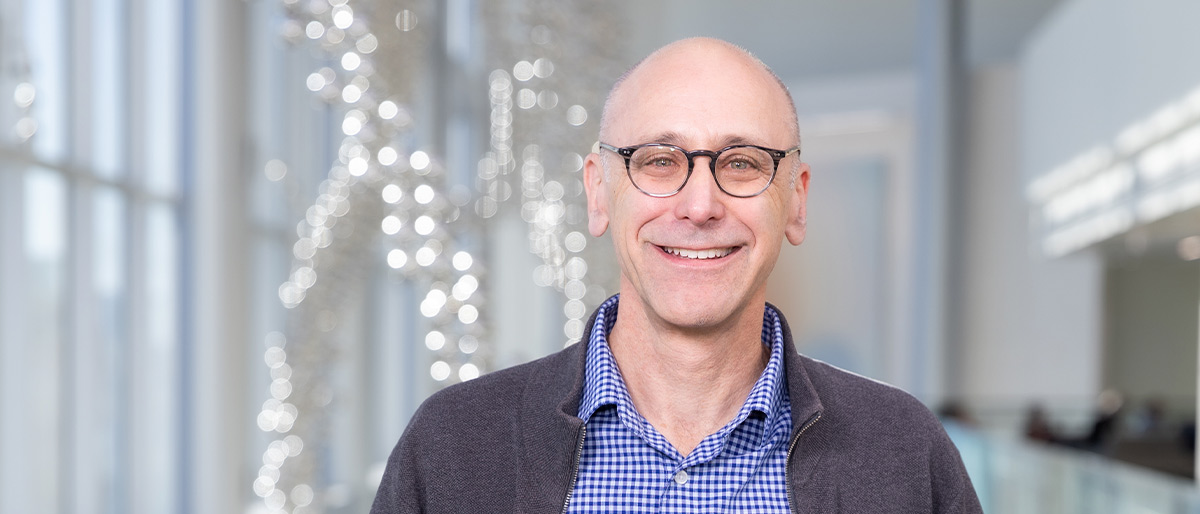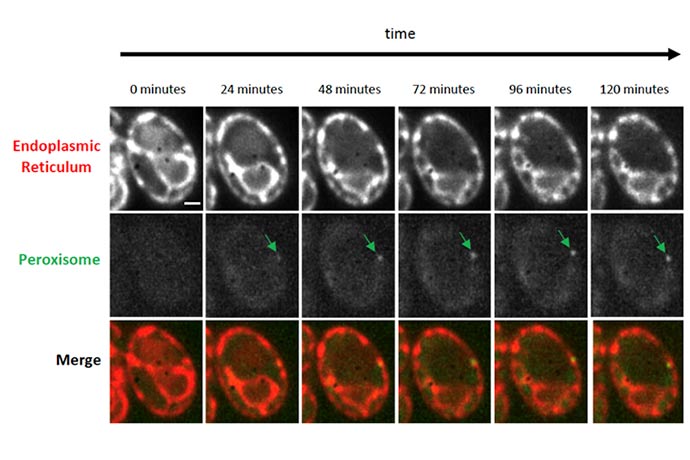Senior NIH researcher Prinz appointed Chair of Cell Biology

Growing up in New Mexico, William A. Prinz, Ph.D., thought of biology and biochemistry as the fields in which the most astonishing breakthroughs in science happened.
A revolution in microscopy that began with the invention of the electron microscope in the 1930s allowed scientists to peer into ever-smaller pieces of life. By the mid-1950s, Francis Crick and James Watson had uncovered the structure of DNA, the molecule that encodes life itself.
“It was such an exciting time in biology and biochemistry then – and now,” said Dr. Prinz, who joined UT Southwestern in November as the new Chair of the Department of Cell Biology.
He earned a Ph.D. in microbiology and molecular genetics from Harvard University and was a postdoctoral fellow in Harvard’s Cell Biology Department before moving to the National Institute of Diabetes and Digestive and Kidney Diseases (NIDDK) at the National Institutes of Health, where he spent the next 21 years conducting research.
In his years at the NIDDK and as a student, Dr. Prinz published 88 scientific papers. His research focused on the tiny organelles within cells that do the cell’s work, much like the organs in a human body. He is best known for studies into the exchange of fats (also called lipids) between organelles at so-called membrane contact sites where organelles come in close contact within a cell. Dr. Prinz is on the editorial boards of the Journal of Cell Biology, Developmental Cell, and the Journal of Biological Chemistry.

“The scientific expertise and proven leadership record that Dr. Prinz brings will continue the Department of Cell Biology’s tradition for excellence and further elevate our institution as a national hub for discovery and innovation,” said Executive Vice President for Academic Affairs and Provost W. P. Andrew Lee, M.D., in announcing the appointment. Dr. Lee is also Dean of UT Southwestern Medical School.
In an interview for Center Times, Dr. Prinz answered questions about his background and research.
Your research has focused on organelle biogenesis, or creation. Could you explain what that is, why it is important, and what attracted you to this line of research?
All cells have internal structures called organelles. They are called organelles because they are conceptually similar to organs in animals and humans. Organelles are critical for many cellular functions and help cells respond to environmental cues and stresses. Understanding how organelles form and function is one of the central questions in cell biology. I started studying organelle biogenesis because I am fascinated by how cells reproduce themselves and how the size, shape, and position of organelles allow cells to function optimally.
What research findings are you best known for?
Some of my earliest work as an independent investigator revealed the biochemical mechanism of fat transport by a large family of proteins called oxysterol-binding proteins, first identified by Michael Brown, M.D., and Joseph Goldstein, M.D., here at UT Southwestern. (The two UTSW researchers are Nobel Prize-winning Professors of Molecular Genetics and Internal Medicine). I showed that oxysterol-binding proteins transport fats between organelles at membrane contact sites. I went on to discover how this is controlled and showed that membrane contact site formation can be induced by cellular stresses and help with fat exchange to lessen toxic accumulation of fat in organelles.
What studies are you most proud of?
I am particularly proud of a pair of papers – one in the Journal of Cell Biology and one in Current Biology – on proteins called FIT2s. These proteins had been implicated in the creation of fat-storage organelles called lipid droplets. We found that in cells lacking FIT2 proteins, nascent fat cells fail to emerge from the membrane of the endoplasmic reticulum (ER), another cell organelle. In a second study, we found that FIT2s probably affect the fat composition of the ER membrane and suggested that lipid-droplet emergence is driven by fats. Several people have told me they present these papers in cell biology classes they teach.
How do defects in fat metabolism and organelle creation contribute to disease?
Several major diseases are associated with defects in fat metabolism and equilibrium or homeostasis, including metabolic syndrome, Type 2 diabetes, and atherosclerosis. Numerous rarer genetic disorders are caused by defects in genes required for fat metabolism and regulation. Understanding and treating these diseases requires a knowledge of how cells modulate fat homeostasis and respond to stress.
I hope that understanding these principles will facilitate the search for drug targets to treat disorders caused by defects in organelle formation and fat homeostasis.
What is your vision for the Department?
The Cell Biology program at UTSW is already excellent. I want to build it into one that is among the best in the world by attracting top young talent and fostering collaborations both within the Department and with the broader UTSW community.
Dr. Brown, a Regental Professor, holds The W. A. (Monty) Moncrief Distinguished Chair in Cholesterol and Arteriosclerosis Research, and the Paul J. Thomas Chair in Medicine.
Dr. Goldstein, a Regental Professor, holds the Julie and Louis A. Beecherl, Jr. Distinguished Chair in Biomedical Research, and the Paul J. Thomas Chair in Medicine.
Dr. Lee holds the Atticus James Gill, M.D. Chair in Medical Science.
Dr. Prinz holds the Virginia and Edward Linthicum Distinguished University Chair in Biomedical Science.

